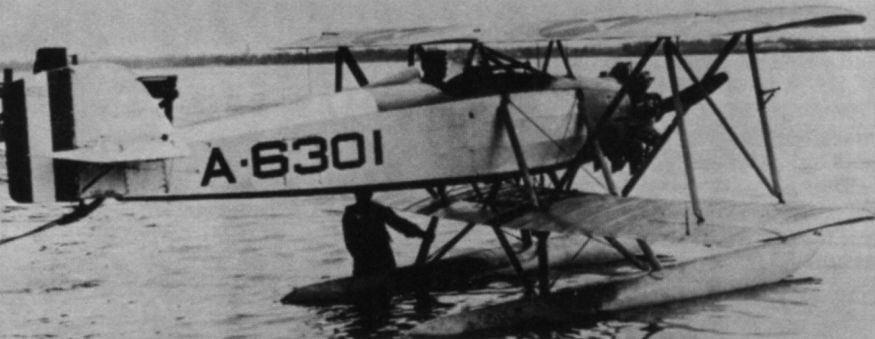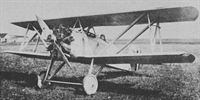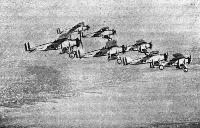
Naval Aircraft Factory TS
Созданное 10 августа 1921 года Бюро аэронавтики ВМС США стало инициатором создания истребителя-биплана TS - первого самолета, спроектированного специально для ВМС США для использования с авианосцев. Конструктивно он представлял собой одноместный биплан с открытой кабиной, с шасси, стойки которого были пригодны для установки колес или спаренных поплавков, и с одним звездообразным двигателем Lawrence J-1 мощностью 200 л.с. В соответствии с политикой правительства США на то время был организован тендер, по результатам которого компании "Curtiss Aeroplane" и "Motor Company" получили контракт на постройку 34 серийных самолетов TS-1 - первый приступил к эксплуатации на борту авианосца "Лэнгли" в декабре 1922 года. Самолеты, базировавшиеся на линкорах, крейсерах и эсминцах, опускались на воду и поднимались на борт при помощи подъемного крана. Чуть позже компания "Curtiss" получила контракт на выпуск еще двух TS-1, но цельнометаллической конструкции, они поступили в опытную эксплуатацию под обозначением F4C-1.
На заводе NAF было построено еще пять самолетов TS-1 для оценки правильности расчетов компаний-подрядчиков по оплате выполненной ими работы. Позже завод построил еще четыре улучшенных самолета TS-2 и TS-3 с разными силовыми установками для сравнительных испытаний: два - с двигателями Aeromarine мощностью 240 л.с. и два - с двигателями Wright-Hispano E мощностью 180 л. с. (TS-2 и TS-3). Один TS-3 был модифицирован для участия в авиагонках и получил обозначение TR-2, позже он использовался в качестве тренировочного самолета для команды ВМС США, готовившейся к соревнованиям на Кубок Шнайдера в 1923 году. Основной вариант TS-1 имел размах крыльев бипланной коробки 7,62 м, максимальную взлетную массу 968 кг и развивал максимальную скорость на уровне моря 198 км/ч.
Описание:
- Naval Aircraft Factory TS
- Flight, November 1922
THE CURTISS MARINE FLYING TROPHY RACE
Фотографии
-
Мировая Авиация 203
Регистрационный номер: A-6301 Этот A6301 - второй самолет TS-1, из построенных заводом NAF. Здесь он сфотографирован в варианте с поплавковым шасси.
-
Flight 1922-11 / Flight
Регистрационный номер: A-6243 THE CURTISS MODEL TS BIPLANE: This machine, which was built under special contract for the U.S. Navy, can be adapted for either land or sea work, the substitution of pontoons for land gear being easily accomplished.
-
Flight 1922-11 / Flight
Регистрационный номер: A-6248 THE CURTISS MODEL TS BIPLANE: This machine, which was built under special contract for the U.S. Navy, can be adapted for either land or sea work, the substitution of pontoons for land gear, as seen here, being easily accomplished. Note the petrol tank formed in lower centre section.
-
Air International 1976-03 / Fighter A to Z
The F4C-1 represented a major rework on the part of Curtiss of the Curtiss-manufactured Naval Aircraft Factory TS-1 fighter.
-
Flight 1924-06 / Flight
AMERICAN FORMATION FLYING: Fighting Squadron One, Aircraft Squadrons, U.S. Battle Fleet, flying over San Diego harbour. The machines are "T.31" fighters, fitted with 200 h.p. Wright (Lawrence) "J.1" radial air-cooled engines.
-
Air International 1976-03 / Fighter A to Z
The F4C-1 represented a major rework on the part of Curtiss of the Curtiss-manufactured Naval Aircraft Factory TS-1 fighter.
- Фотографии





